
This story originally appeared on Best Universities and was produced and distributed in partnership with Stacker Studio.
Colleges with the most Olympians since Tokyo 2020
According to the National Collegiate Athletics Association, about 75% of the Team USA roster in the 2020 Tokyo Games were current or former college athletes.
Much like the way attending an esteemed law school can improve the career trajectory of an aspiring lawyer, choosing the right collegiate athletics program can help people reach what could be considered the pinnacle of athletic success—the Olympics or the Paralympics.
It's no coincidence that many Olympians and Paralympians attended the same schools and competed in the same world-class collegiate athletics programs. Schools like Stanford, the University of Florida, and UCLA have a track record—no pun intended—for attracting and fostering athletic talent. While creating pathways from collegiate competition to the Olympics has happened naturally throughout the history of the Games, there has been a recent push for schools, in partnership with Olympic committees, to be strategic about the college-to-Olympics pipeline.
Founded in 2016, the United States Olympic and Paralympic Committee's Collegiate Advisory Council advocates for strengthening Olympic and Paralympic programming at the college level. On the council are administrators from 10 schools that have contributed to Team USA's success at the Games.
The USOPC entered into a two-year agreement with the NCAA in March 2022, focusing on introducing and expanding adaptive sports programs in more colleges and universities for athletes with physical and mobility differences. Only 23 schools in the country offer adaptive sports, with a fraction of those offering competitive sports. The groups are also working to improve communication about the opportunities that exist for student-athletes aiming to compete on an international level.
In the background of this progress, however, college athletes and Olympian hopefuls across the country are facing cuts of nonrevenue-generating sports programs at prominent universities with Olympic success. Stanford, for example, cut 11 sports programs that, over time, won the university 27 Olympic medals.
Best Universities compiled data from Team USA to identify the schools with the highest concentration of college athletes turned Olympians. The data includes athletes who competed at the collegiate level in varsity or club sports and either the Olympic Games or Paralympic Games for Team USA.
The true number of Olympic and Paralympic athletes associated with a particular school is much higher when you consider some international student-athletes may attend and train in the U.S. but represent their home countries in the Games. Or that some national team student-athletes graduate but continue competing in their sport, or use a school's facilities to train for their sport, but never actually compete on a school-sanctioned team.
In order to normalize across schools with different athletic program sizes, colleges are ranked by Olympic athletes per 1,000 student-athletes, limited to schools with at least five total athletes in the 2020 and 2022 Olympics. The Department of Education's Equity in Athletics database only counts student-athletes involved in division-level sports under a sanctioning body like the NCAA. Olympics data also includes current and former college athletes participating in club sports.

#10. University of Arizona
- 19.3 Olympic athletes for every 1K student-athletes (11 total)
- 11 athletes in the 2020 Tokyo Summer games (8 sports)
--- 8 Paralympians and 3 Olympians
- No athletes in 2022 Beijing Winter games
The University of Arizona's Adaptive Athletics program—the most extensive collegiate program in the country—has sent 34 student-athletes and alums to the Paralympic Games since 1960.
The school currently offers seven adaptive sports teams, including men's and women's basketball, golf, handcycling, rugby, tennis, and track, with hopes of adding swimming and triathlon in the future. Paralympic athletes from the University of Arizona represented the U.S. in Tokyo in wheelchair basketball, wheelchair tennis, wheelchair rugby, track and field, and rowing.
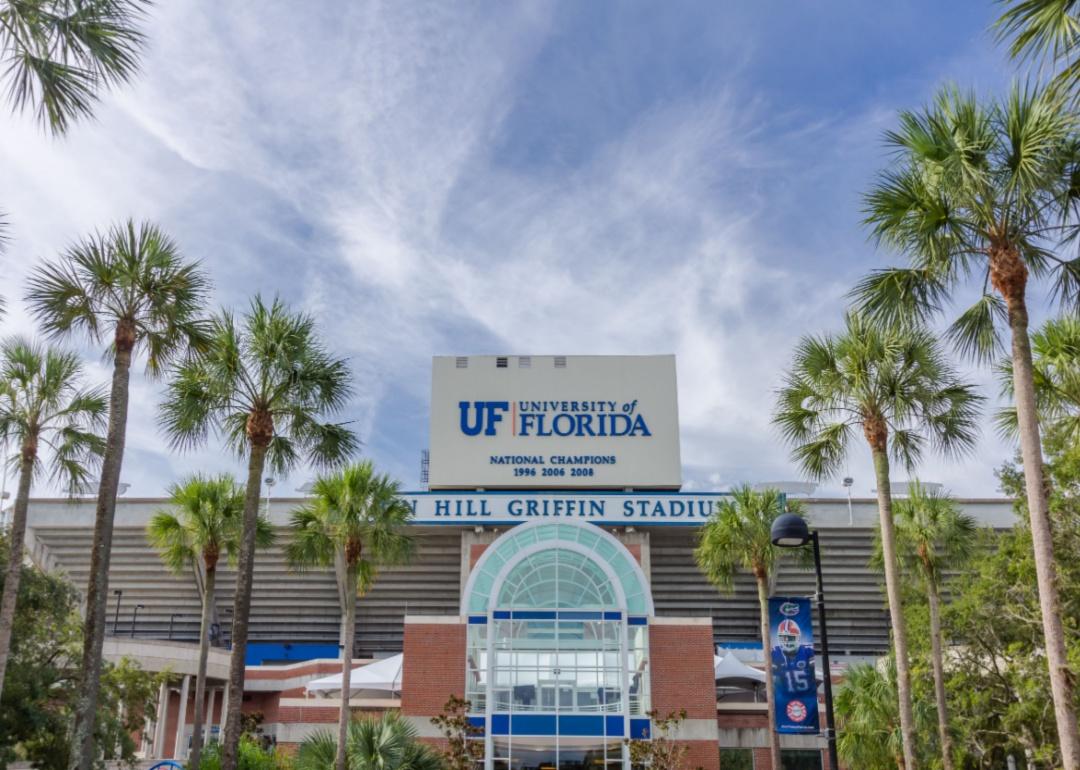
#9. University of Florida
- 20.2 Olympic athletes for every 1K student-athletes (14 total)
- 14 athletes in the 2020 Tokyo Summer games (5 sports)
- No athletes in 2022 Beijing Winter games
The University of Florida has churned out some of the world's best track and field athletes. The program boasts 23 Olympic medals, including eight gold. At the Tokyo games, Gators competed for Team USA in swimming, track and field, baseball, and softball.
Alum Caeleb Dressel set two world records in the 100-meter fly and the 4x100-meter medley relay and made Gator history by becoming the Florida student-athlete with the most gold medals—five—won in a single Olympics.

#8. University of Texas
- 21.7 Olympic athletes for every 1K student-athletes (15 total)
- 15 athletes in the 2020 Tokyo Summer games (7 sports)
- No athletes in 2022 Beijing Winter games
The University of Texas has a long history of Olympic representation and success. Longhorn athletes have won 153 medals: 88 gold, 41 silver, and 24 bronze.
In the Tokyo games, Longhorns competing for Team USA won gold medals in men's basketball, led by famous alum Kevin Durant, and women's basketball and volleyball. UT athletes earned silver medals for Team USA in softball, the women's 4x100-meter relay, and the women's 1,500-meter freestyle swim.
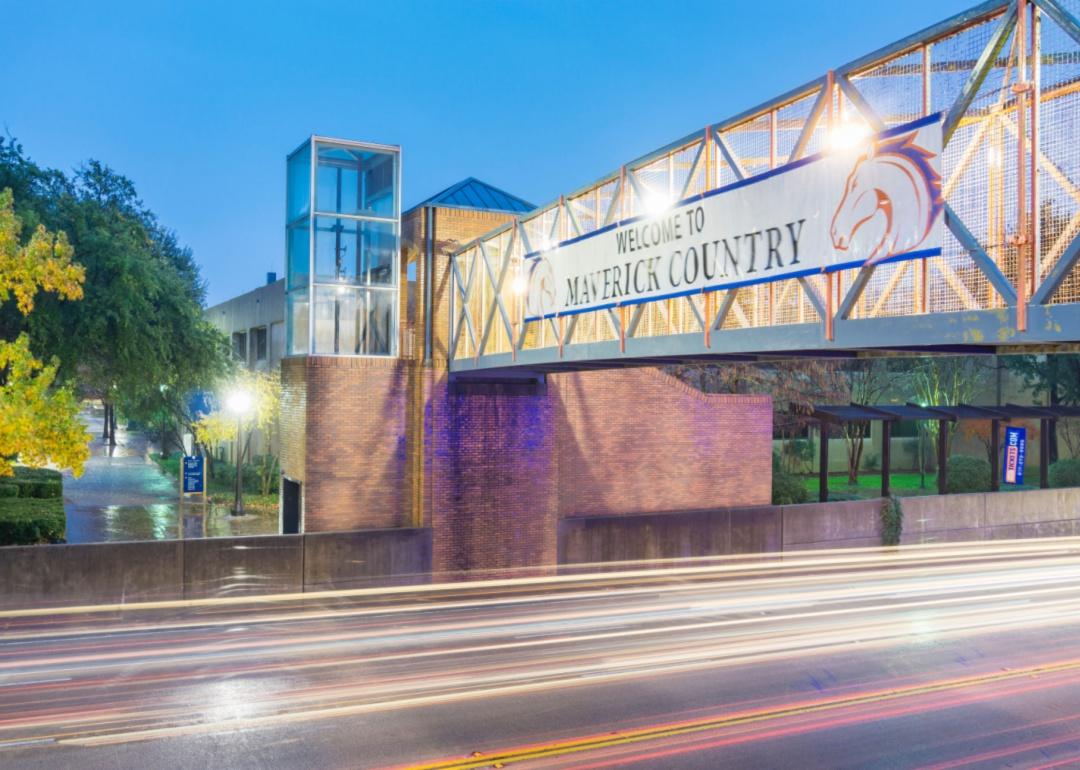
#7. University of Texas at Arlington
- 22.2 Olympic athletes for every 1K student-athletes (8 total)
- 8 athletes in the 2020 Tokyo Summer games (3 sports)
--- 8 Paralympians and 0 Olympians
- No athletes in 2022 Beijing Winter games
The Movin' Mavs and Lady Movin' Mavs—the University of Texas at Arlington's men's and women's wheelchair basketball teams—were a big part of Team USA's paralympic success in the Tokyo games.
Team USA's women's wheelchair basketball team, one-third of which was comprised of UTA alums, won the bronze. Three UTA Paralympians were part of the gold medal-winning men's wheelchair basketball team, and one UTA alumn won silver as a member of the USA's wheelchair rugby team.
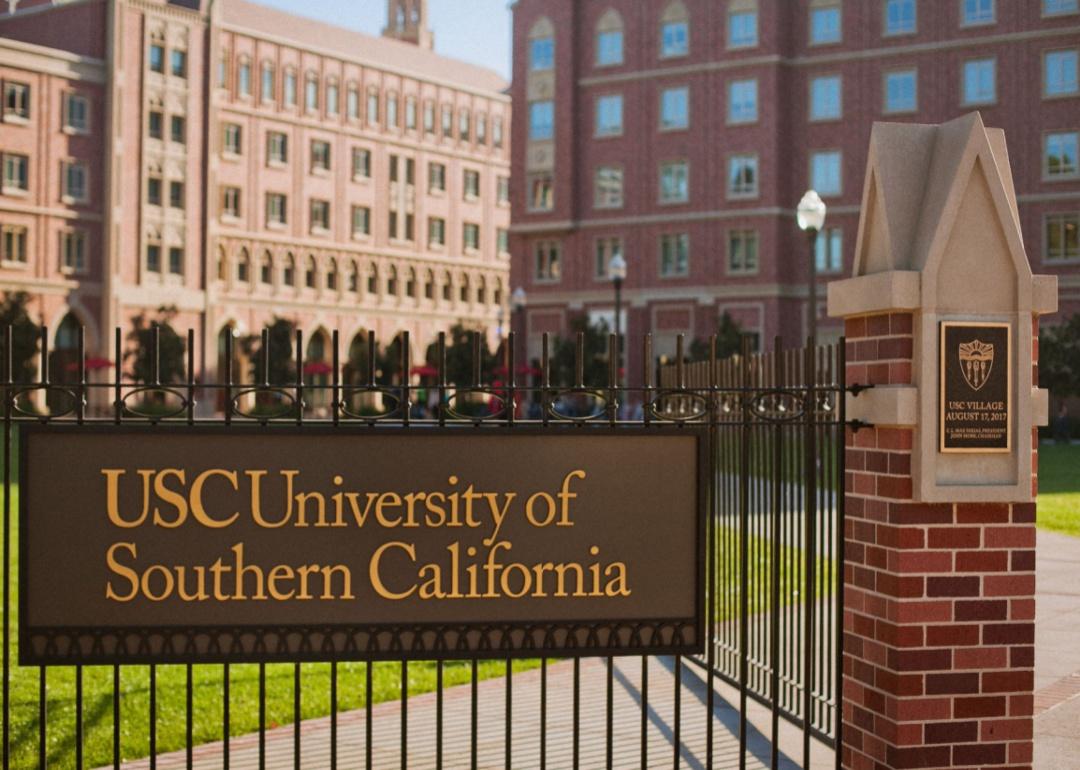
#6. University of Southern California (tie)
- 22.3 Olympic athletes for every 1K student-athletes (15 total)
- 15 athletes in the 2020 Tokyo Summer games (5 sports)
- No athletes in 2022 Beijing Winter games
Athletes with current and former ties to the University of Southern California competed in swimming, track, court and beach volleyball, shooting, and water polo in the Tokyo games.
Trojan athletes took home gold, silver, and bronze medals in their individual or team sports. Notable alum and track star Allyson Felix, who officially retired from the sport in 2022 after a 20-year career, won a gold medal in the women's 4x400m relay and the 400m in her final Olympic appearance.
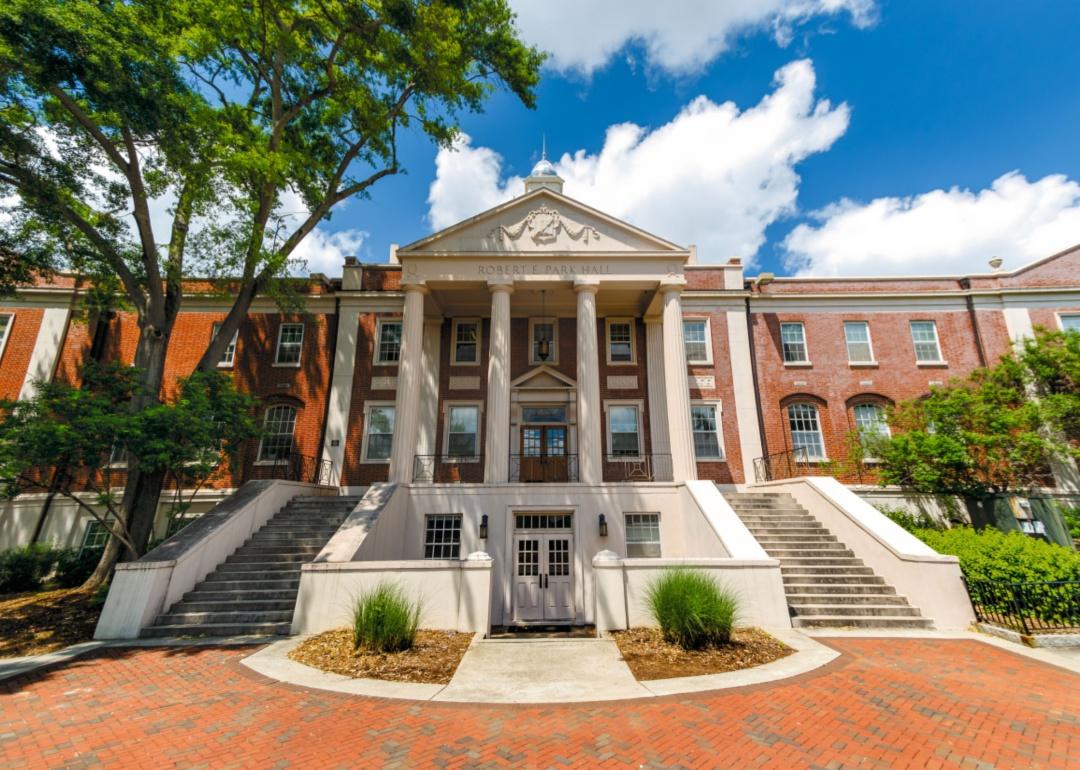
#6. University of Georgia (tie)
- 22.3 Olympic athletes for every 1K student-athletes (15 total)
- 15 athletes in the 2020 Tokyo Summer games (2 sports)
- No athletes in 2022 Beijing Winter games
The University of Georgia sent 15 swimmers and track and field athletes to the Tokyo games. The Bulldogs competed in many different individual and team events within those sports, including decathlon, heptathlon, pole vault, butterfly, and various swimming relays.
Seven Georgia athletes earned a medal at the Tokyo games. Paralympian alums Jarryd Wallace, a track and field athlete, and Amanda Dennis, a goalball athlete, also represented the university.

#4. UCLA
- 25.5 Olympic athletes for every 1K student-athletes (21 total)
- 21 athletes in the 2020 Tokyo Summer games (9 sports)
- No athletes in 2022 Beijing Winter games
The University of California, Los Angeles, has a long history of Olympic success. Some of the most prolific Olympic athletes, like Jackie Joyner-Kersee and Florence Griffith Joyner, first competed for UCLA. Since 1928, more than 400 current or former UCLA students have competed in the Olympics, including for other countries.
In the Tokyo games, UCLA athletes competed for Team USA across many sports, including track and field, women's soccer, volleyball, water polo, baseball, softball, tennis, and basketball.

#3. The University of Illinois at Urbana-Champaign
- 33.9 Olympic athletes for every 1K student-athletes (22 total)
- 20 athletes in the 2020 Tokyo Summer games (2 sports)
--- 20 Paralympians
- 2 athletes in the 2022 Beijing Winter games (2 sports)
--- 2 Paralympians
Former Illini athletes and Tokyo Paralympians competed for Team USA in track and field, men's wheelchair basketball, and women's wheelchair basketball. Alum Tatyana McFadden won three medals in the Games, including a gold in the 4x100-meter relay.
The adaptive athletics program at the University of Illinois at Urbana-Champaign is one of the oldest in the country. In the late 1940s, athletes from the University of Illinois formed the National Wheelchair Basketball Association and the first collegiate wheelchair basketball team in the country. In Beijing, two alums were part of Team USA's gold-medal-winning sled hockey team.
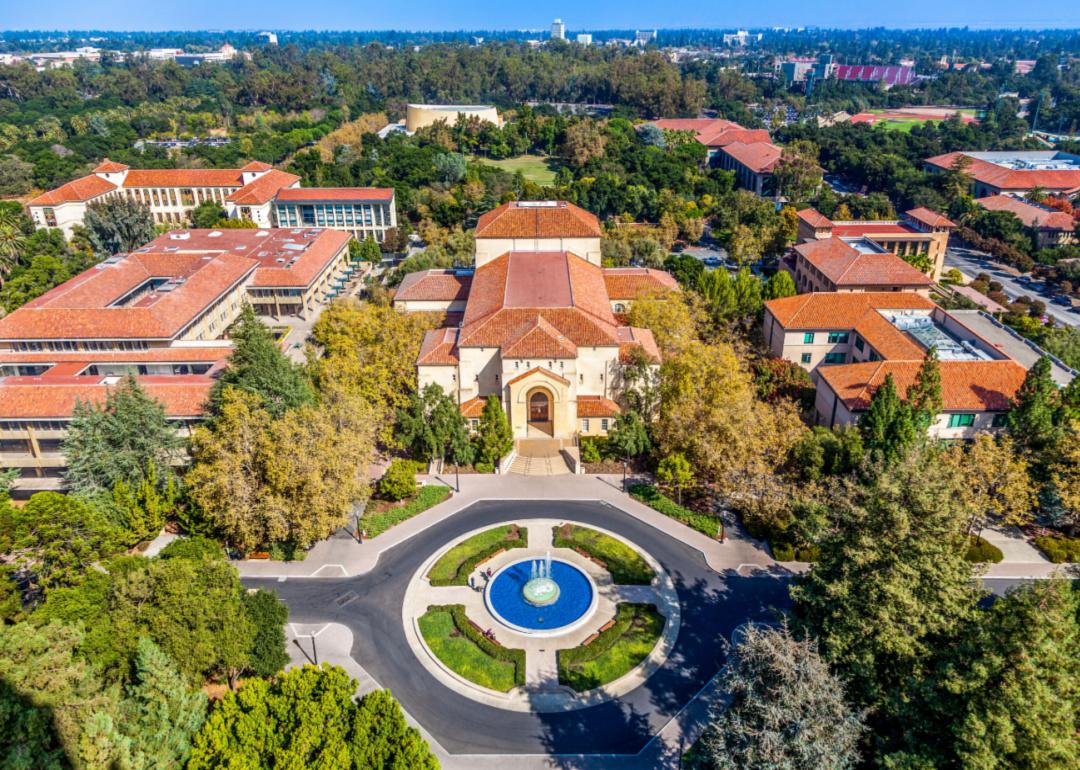
#2. Stanford University
- 36.4 Olympic athletes for every 1K student-athletes (32 total)
- 32 athletes in the 2020 Tokyo Summer games (12 sports)
- No athletes in 2022 Beijing Winter games
The athletic talent fostered by Stanford University was present in a dozen different sports at the Tokyo games. Athletes competed for Team USA in fencing, cycling, gymnastics, rowing, soccer, swimming, track and field, volleyball, water polo, and sailing.
Alum Katie Ledecky's two gold medals at the Tokyo games made her the most decorated female swimmer in Olympic history. Stanford athletes earned 26 medals in Tokyo—more than any other institution.
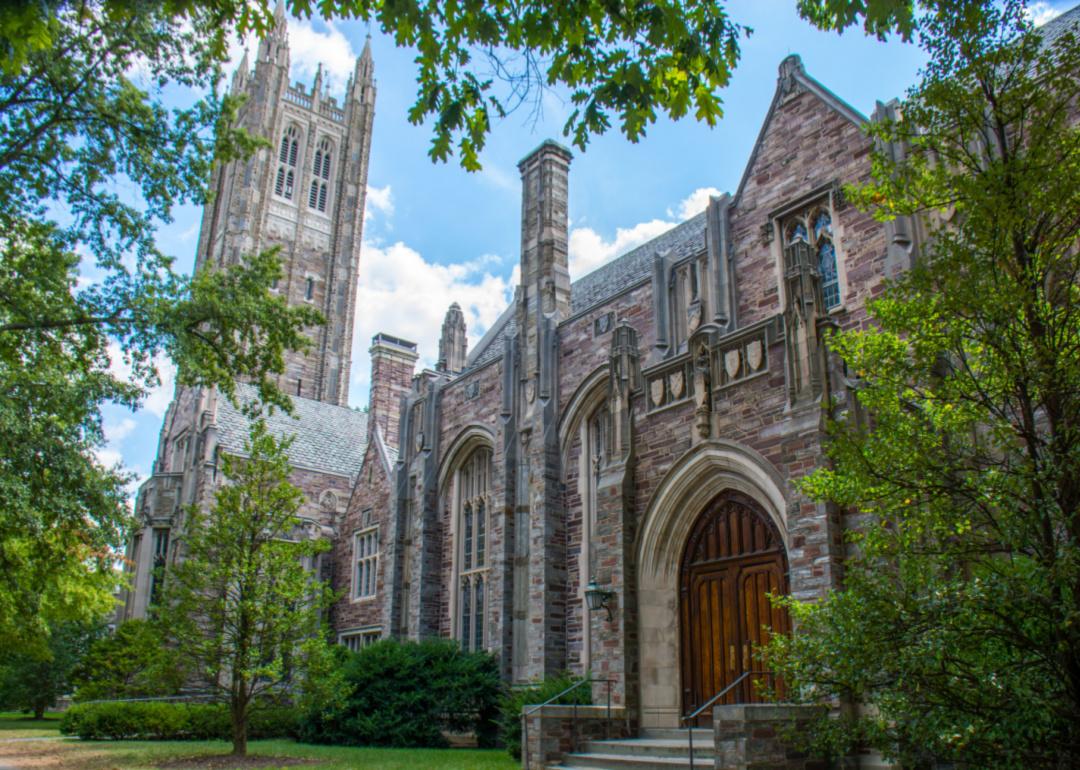
#1. Princeton University
- 49.0 Olympic athletes for every 1K student-athletes (7 total)
- 6 athletes in the 2020 Tokyo Summer games (3 sports)
- 1 athlete in the 2022 Beijing Winter games (1 sport)
Princeton's relatively small size makes the share of Olympic athletes with ties to the university particularly impressive. Princeton athletes competed for Team USA in rowing, fencing, and water polo.
Alum Ashleigh Johnson, a goalkeeper for Team USA's women's water polo team, led the U.S. to its third consecutive gold medal in the sport. It marked the first time any women's water polo team in the world achieved such a feat.



